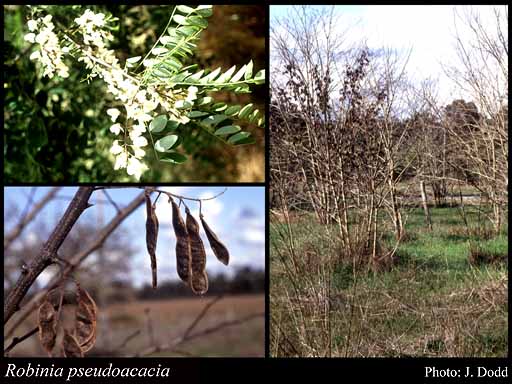- Reference
- Sp.Pl. [Linnaeus] 722 (1753)
- Conservation Code
- Not threatened
- Naturalised Status
- Alien to Western Australia
- Name Status
- Current
Tree, to 15 m high, with spiny stems & branches. Fl. white, Sep to Dec. Grey sandy clay, red-browm loam, granite. Along creeklines, valley edges, disturbed land.







Distribution
- IBRA Regions
- Avon Wheatbelt, Jarrah Forest, Swan Coastal Plain, Warren.
- IBRA Subregions
- Katanning, Northern Jarrah Forest, Perth, Southern Jarrah Forest, Warren.
- Local Government Areas (LGAs)
- Augusta Margaret River, Boyup Brook, Bridgetown-Greenbushes, Denmark, Gosnells, Katanning, Manjimup, Mundaring, Narrogin, Victoria Park.
Management Notes (for the Swan NRM Region)
General Biology. Growth form. Tree. Reproduction. Root suckers. Time to first flowering. 6+ years. Toxicity. Inner bark, root sprouts and wilted leaves are toxic to humans and livestock. Vegetative regeneration strategy. Resprouts, produces root suckers. Woody structure. Ring porous. Fire response. Can resprout vigorously following fire.
Notes. Intolerant of shade. Increases available soil nitrogen facilitating invasion of other weeds.
Additional information. Origin. Eastern North America. History of use/introduction. Garden escape.
Suggested method of management and control. Hand pull seedlings. Basal bark older plants using 250 ml Access® in 15 L of diesel to base 50 cm of trunk in spring-summer. Read the manufacturers' labels and material safety data sheets before using herbicides. For further information consult the Australian Pesticides and Veterinary Medicines Authority to determine the status of permits for your situation or state.
Management Calendar
| Calendar Type | Jan | Feb | Mar | Apr | May | Jun | Jul | Aug | Sep | Oct | Nov | Dec | Comments |
|---|---|---|---|---|---|---|---|---|---|---|---|---|---|
| Flowering | O | Y | Y | Y | O | ||||||||
| Optimum Treatment | Y | Y | O | O | Y | Y | Y | Y |
Legend: Y = Yes, regularly, O = Occasionally, U = Uncertain, referred by others but not confirmed.
References
- Brown, K. & Brooks, K. (2002) Bushland Weeds: A Practical Guide to their Management. Environmental Weeds Action Network, Greenwood.
- Converse, C.K. (1984) Element stewardship abstract for Robinia pseudoacacia. The Nature Conservancy, Arlington, USA. URL: http://tncweeds.ucdavis.edu/esadocs.html - Accessed December 2007.
- Hussey, B.M.J., Keighery, G.J., Dodd, J., Lloyd, S.G. & Cousens, R.D. (2007) Western Weeds. A guide to the weeds of Western Australia. 2nd Edition. The Plant Protection Society of Western Australia, Victoria Park.
- Navie, S. & Adkins, S. (2008) Environmental Weeds of Australia, An interactive identification and information resource for over 1000 invasive plants. Centre for Biological Information Technology, The University of Queensland.
- Rice, S.K. & Westerman, B. (2004) Impacts of the exotic, nitrogen-fixing black locust (Robinia pseudoacacia) on nitrogen-cycling in a pine-oak ecosystem. Plant ecology, 174 (1): 97-107.
- Sabo, A.E. (2000) Robinia pseudoacacia invasions and control in North America and Europe. Restoration and Reclamation Review, 6 URL: http://horticulture.cfans.umn.edu/vd/h5015/rrr.htm - Accessed December 2007. Student On-line Journal.
- Sullivan, J. (1993) Robinia pseudoacacia. In U.S. Department of Agriculture, Forest Service, Rocky Mountain Research Station, Fire Sciences Laboratory. Fire Effects Information System. URL: http://www.fs.fed.us/database/feis/plants - Accessed December 2007.
- Swearingen, J.M. & Morse, M. (1998) Black locust, Robinia pseudoacacia. Alien plant invaders of natural areas - trees. URL: http://www.nps.gov/plants/alien/trees.htm - Accessed December 2007.